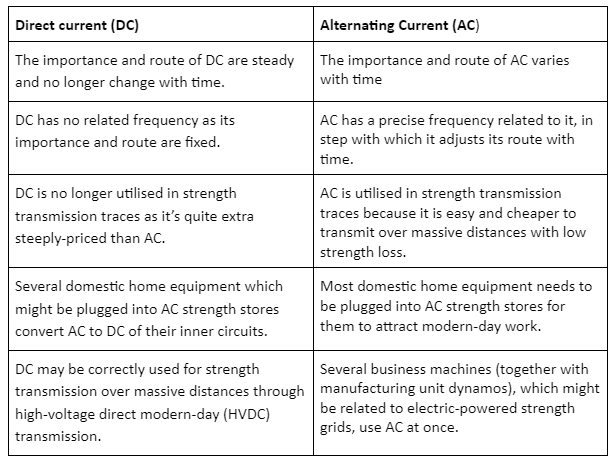Electricity is an undeniable necessity in modern society. Studying the origins and definitions of electricity and electric current is essential to understanding its various uses. The current in a conductor is defined by free electrons that exhibit random zigzag motions. This is the flow of charged particles, especially electrons, in a conductor under the action of an externally applied potential difference. Current is scientifically defined as the amount of charge flowing through a conductor per unit of time.
Conventional flow of current: People assume that the flow of current is from the positive to the negative terminal of the source. This is a very ancient convention, and it was chosen during the first discovery of electricity after a few observations.
Electron flow: This is the convention we follow today, where electrons flow out of the negative terminal and enter the positive terminal through the circuit.
SI Units:
- Charge – Coulomb (C)
- Time – second (s)
- Electric Current – Coulomb/second (C/s), commonly called Ampere (A)
The most prominent types of electric currents, each with its own uses, are direct current (DC) and alternating current (AC).
Direct Current (DC)
It would be better to understand this with the help of an example. For that, we have to take a bulb that glows when connected to a battery.
Potential difference of the battery, V = 6 volts
Internal resistance of the bulb, R = 2 ohm
The DC flowing through the bulb when connected to the battery will be given by
Idc = V/R = 6/2 = 3A
Current Ic flows from the positive terminal to the negative terminal of the battery, and its value is constant. Therefore, this DC does not have a magnitude or direction that changes over time.
If we plot the current Idc with time, we get a simple straight line parallel to the time axis.
Applications of DC
DC power supplies have many uses in everyday life. Some of them are given here:
- It is used in a variety of devices, such as calculators and watches. The battery can only use direct current to store energy.
- All electronic devices operate with transistors, and these transistors can only operate with direct current.
- Direct current is not commonly used in ordinary power lines, but it can be used efficiently to deliver over long distances using high voltage direct current (HVDC) transmission.
Alternating Current
Alternating current is a time-varying function and can be expressed by the following equation.
Where
Iac = I0 sin (2𝜋ft)
And Iac is the alternating current with time t.
AC varies between I0 and -I0 with a period T and frequency f. The maximum magnitude of Iac is I0. Hence, it is called the amplitude of the alternating current.
Period and frequency are inversely related
T = 1/f
Therefore, the magnitude of the alternating current varies between I(o) and -I(o) with a period T and frequency f, with its direction changing between the positive and negative half every half cycle.
Applications of AC
Alternating current is as important and useful as direct current. Some of its uses are presented:
- AC is used to transmit electrical energy from a power plant to a home because it can be easily and inexpensively modified to minimise energy loss during transmission.
- AC outlets are used to charge rechargeable batteries that are widely used in cameras, mobile phones, and digital watches.
- Most appliances, such as microwave ovens, induction cookers, computers, and laptops, need to be plugged into an AC outlet to draw power.
Differences Between AC and DC
Each type of electric current has its pros and cons.

Conclusion
Direct current is a type of electric current that has a fixed magnitude and direction. The net flow of DC electrons is the fixed direction from the negative terminal of the applied voltage to the positive terminal. On the other hand, alternating current has a magnitude and direction that changes over time. With alternating current, the direction of the net flow of electrons changes several times in a second.
 Profile
Profile Settings
Settings Refer your friends
Refer your friends Sign out
Sign out




